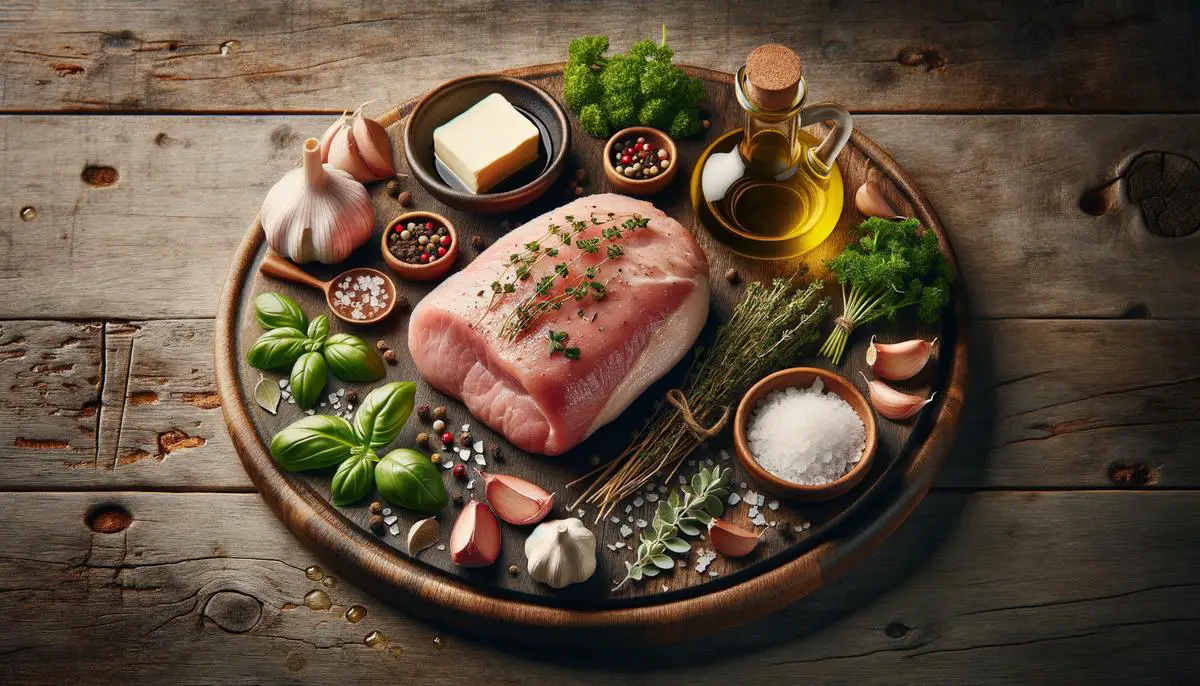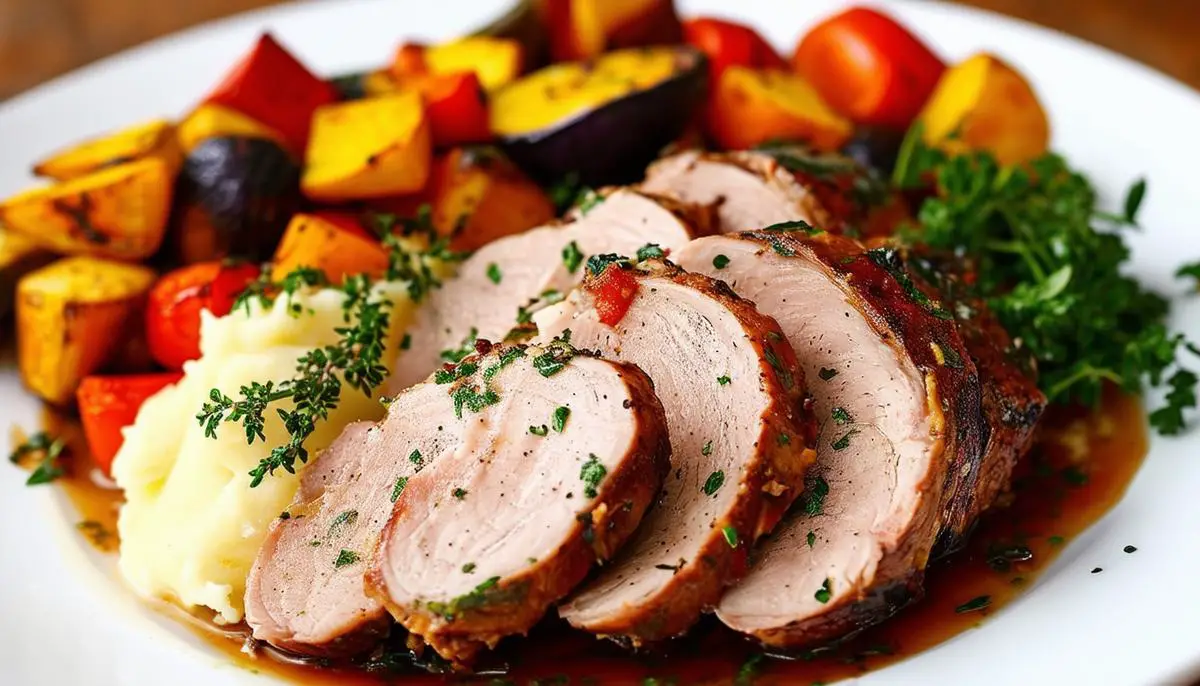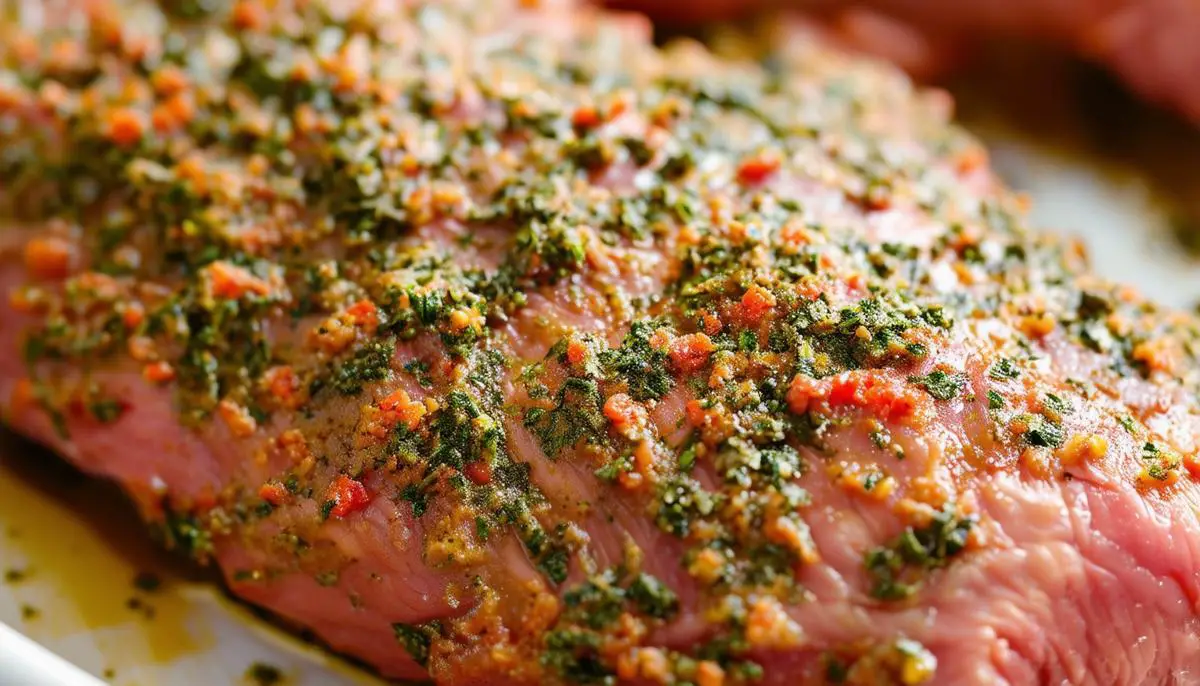
Background and Origins of Pork Tenderloin
Pork tenderloin, nestled along the pig's backbone, boasts a rich history and global appeal. This lean cut, prized for its delicate texture and versatility, has graced tables from rustic European kitchens to vibrant Asian markets.
In Italy, pork tenderloin alla Fiorentina showcases the meat's natural flavors with a simple preparation of rosemary and garlic.
The tenderloin's leanness and adaptability make it a canvas for diverse flavors and cooking methods. Its affordability and consistently tender results have solidified its status as a beloved staple, democratizing gourmet dining. A well-prepared pork tenderloin elicits delight, creating a shared experience of savoring something truly delectable.
From China's savory-sweet stir-fries to South America's smoky asados, pork tenderloin's global appeal is undeniable. Its intrinsic qualities – leanness, versatility, and universal love – make it a quintessential component in the art of cooking, promising a fantastic meal for chefs of all levels.
Key Ingredients and Their Purpose
To elevate a baked pork tenderloin, understanding each key ingredient's role is crucial.
Pork Tenderloin: This lean cut is renowned for its tenderness and subtle flavor, serving as an ideal canvas for bold seasonings.
Olive Oil: Extra virgin olive oil facilitates the searing process, developing a rich, caramelized crust that locks in juices and enhances flavor depth.
Butter: As the pork bakes, butter melts into a basting sauce, blending with herbs and meat juices to keep the tenderloin moist and infuse it with a rich, buttery savor.
Garlic: Whether fresh or powdered, garlic enriches the meat with a robust, earthy essence that complements the tenderloin's subtle taste.
Herbs (Basil, Oregano, Thyme, Parsley, Sage): These classic Italian herbs offer an aromatic blend that infuses the tenderloin with freshness and complexity without overshadowing the meat.
Celtic Sea Salt: High-quality sea salt enhances flavors without imparting an overly salty taste, bringing out the pork's natural sweetness.
Freshly Cracked Pepper: Freshly cracked pepper adds a bold, spicy kick and aids in forming a flavorful crust during searing.
Optional ingredients like Italian herb seasoning blends, garlic powder, and alternate herbs and spices provide delightful variations and convenience.

Pro Tips and Common Mistakes
To achieve perfection, embrace these expert tips:
- Avoid Overcooking: Maintain an internal temperature of 145°F to prevent dryness. Cook until 140°F and allow it to rest.
- Searing Before Baking: Sear the tenderloin before baking to lock in juices and develop a caramelized crust.
- Instant-Read Thermometer: Use an instant-read thermometer to ensure accurate doneness. Trust the thermometer over cooking times.
- Selecting the Right Cut: Differentiate between pork tenderloin and pork loin. Tenderloin is smaller, leaner, and cooks faster.
- Resting the Meat: Tent the meat with foil for 5-10 minutes post-cooking to allow juices to redistribute, ensuring a succulent bite.
Avoid These Mistakes:
- Confusing Cuts: Double-check that you're using pork tenderloin, not pork loin.
- Overcooking: Utilize an instant-read thermometer and remove the meat slightly underdone.
- Skipping the Sear: Plan for extra time to ensure a thorough sear on all sides.
- Not Letting It Rest: Cutting into the meat immediately causes juices to escape, leading to dryness.

Serving Suggestions and Complementary Dishes
Elevate your pork tenderloin experience with thoughtful pairings:
Mashed Potatoes: Creamy mashed potatoes offer a smooth, buttery contrast to the tender meat, absorbing savory juices.
Roasted Vegetables: Roasted Brussels sprouts, carrots, or asparagus provide a delightful balance of textures and complement the savory tenderloin.
Fresh Salad: A light, refreshing salad, such as mixed greens with tangy vinaigrette or classic Caesar, offers a palate-cleansing contrast.
Sauces and Garnishes: Enhance flavor with garlic butter, mustard glaze, or a sprinkle of fresh herbs.
Tips on Presentation:
- Slicing: Slice the tenderloin against the grain into medallions for tenderness.
- Plating: Arrange slices in a fan-like pattern or stack neatly, positioning sides around the meat.
- Garnishing: Add a sprinkle of fresh herbs or drizzle sauce for color and flavor.
- Visual Balance: Strive for a balance of colors and textures on the plate.

Storage and Reheating Instructions
Proper storage and reheating maintain the quality and flavor of pork tenderloin leftovers.
Refrigeration:
Store leftover pork tenderloin in an airtight container in the refrigerator for up to three days.
Freezing:
Wrap the tenderloin in plastic wrap or place it in a freezer bag, removing excess air. Freeze individual servings for up to three months. Once thawed, do not refreeze.
Thawing:
Thaw frozen pork tenderloin in the refrigerator overnight to maintain texture and flavor.
Oven Reheating:
Preheat the oven to 350°F. Place the pork tenderloin in an oven-safe dish, wrap it in aluminum foil, and reheat until warmed through (15-20 minutes).
Pan-Frying Slices:
Slice the tenderloin into medallions and pan-fry in butter or olive oil over medium heat until heated through (2-3 minutes per side).
Microwaving:
Arrange pork slices on a microwave-safe plate, cover with a lid or another plate, and heat in short increments (30 seconds), checking frequently to avoid overcooking.
By adhering to these storage and reheating methods, you can enjoy pork tenderloin leftovers with their original succulent texture and rich flavor intact.
Recipe: Baked Pork Tenderloin
Ingredients:
- 2 pork tenderloins (about 1 pound each)
- 2 tablespoons extra virgin olive oil
- 2 tablespoons butter
- 4 cloves garlic, minced
- 1 teaspoon dried basil
- 1 teaspoon dried oregano
- 1 teaspoon dried thyme
- 1 teaspoon dried parsley
- 1 teaspoon dried sage
- 1 teaspoon Celtic sea salt
- 1/2 teaspoon freshly cracked black pepper
Instructions:
- Preheat the Oven:
Preheat your oven to 350°F (175°C). Line a baking sheet with aluminum foil for easy cleanup. - Prepare the Herb Mix:
In a small bowl, combine minced garlic, dried basil, oregano, thyme, parsley, and sage. Set aside. - Season the Pork:
Generously season the pork tenderloins with Celtic sea salt and freshly cracked black pepper on all sides. - Sear the Pork:
Heat the extra virgin olive oil in a large, oven-proof skillet over medium-high heat until it shimmers. Add the pork tenderloins and sear on all sides until a deep golden brown, about 2-3 minutes per side. - Coat with Herb Mix:
Transfer the seared pork tenderloins to the prepared baking sheet. Generously coat the tenderloins with the herb mixture, pressing gently to adhere. - Add Butter:
Place pats of butter on top of each tenderloin. The butter will melt during baking, creating a rich, flavorful sauce. - Wrap in Foil and Bake:
Wrap the tenderloins loosely in foil to create a tent. Bake in the preheated oven until the internal temperature reaches 145°F (63°C), approximately 25 minutes for a 2-pound roast. - Let it Rest:
Remove from the oven and let the pork rest, tented loosely with foil, for at least 5-10 minutes. This allows the juices to redistribute, ensuring a succulent tenderloin. - Slice and Serve:
Slice the pork tenderloin against the grain into medallions. Serve immediately, drizzling any accumulated juices over the top for added flavor.
Nutritional Information (per serving, based on 6 servings):
- Calories: 250 kcal
- Fat: 12 g
- Saturated Fat: 4.5 g
- Cholesterol: 110 mg
- Sodium: 480 mg
- Carbohydrates: 1 g
- Protein: 35 g
Tips
- Use an Instant-Read Thermometer: Always check the doneness with an instant-read thermometer to avoid overcooking.
- Let it Rest: Do not skip the resting period to keep the meat tender and juicy.
- Customize Your Flavors: Experiment with other herbs and spices to customize the dish to your taste preferences.
Enjoy your perfectly baked pork tenderloin, a dish that pairs wonderfully with mashed potatoes, roasted vegetables, or a fresh, crisp salad.




